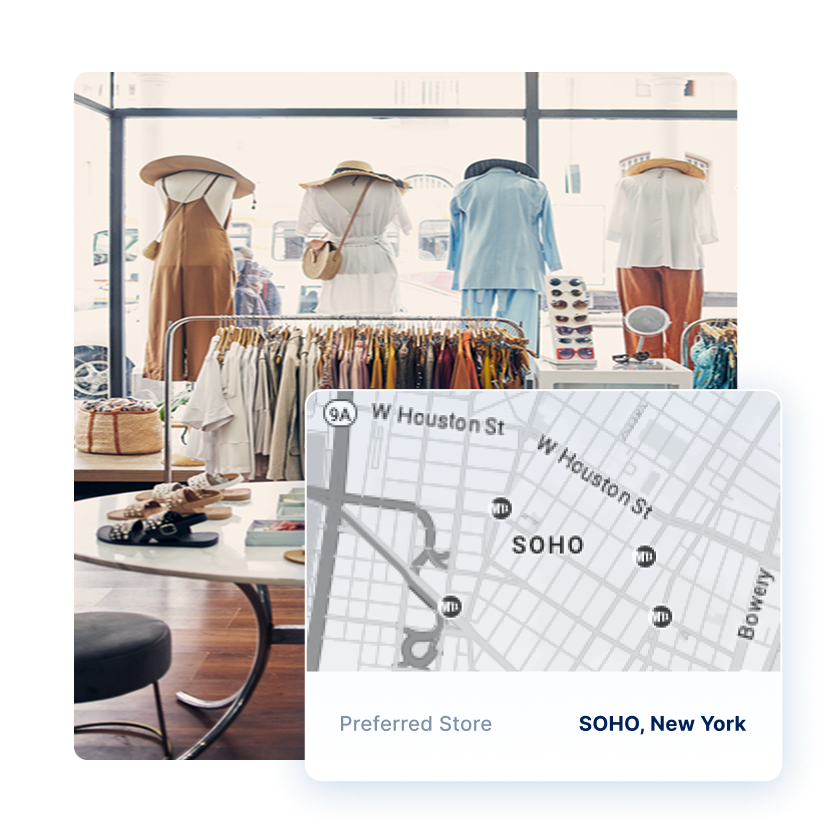Brands have made impressive investments in their physical stores. And they continue to invest as stores become more experiential, inviting shoppers to engage in new ways. At the same time, brands have also invested heavily in their digital channels, constructing finely-tuned interactions aimed at fostering lasting customer relationships.
But the power of those investments is sabotaged when stores and digital channels don’t work together. Silos serve no one.
Stores meet shoppers across the lifecycle, generating awareness for new shoppers and spurring repeat purchases by the most loyal buyers. When in-store shopper behaviors are monitored and tracked separately from digital actions, the customer experience becomes disjointed.
Store associates may be trying to help a shopper find complementary items, unaware of the fact that the customer purchased a similar piece just last week. A digital strategist may be looking at a group of seemingly low-value customers that have bought only a few times in the past five years — without realizing that those shoppers buy frequently in stores and are actually some of their best customers.
The solution is to extend digital strategies and tactics to stores. And the data and information collected by stores should be fueling your digital engines.
If, for example, shoppers browse and create wish lists online, or converse with an AI-driven shopping assistant – and then convert in-store – understanding those behaviors at the in-store point-of-sale adds value to both the associate and the customer. And when a customer purchases in a physical store, that purchase should be leveraged online to motivate cross-category and upsell recommendations.
Understanding where customers are in the lifecycle, and building a comprehensive profile that is enriched with each interaction, is critical to optimizing the customer experience – no matter how a particular customer prefers to shop.
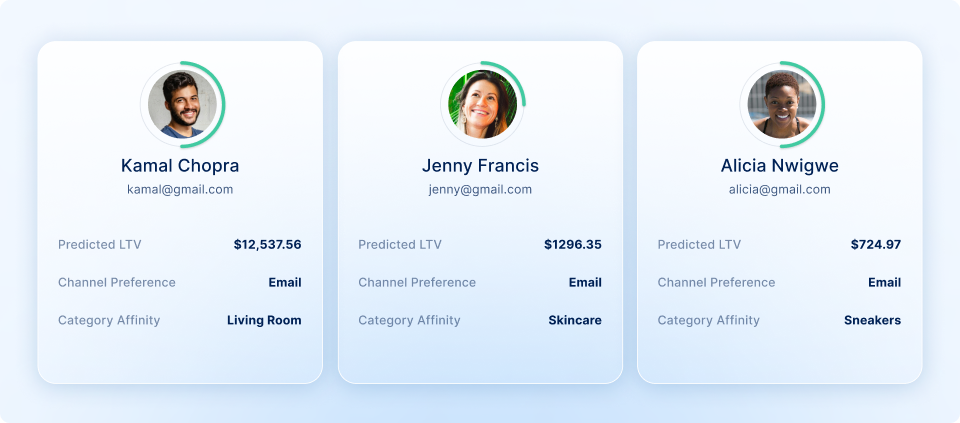
Remember, your best customer is likely the one that shops across all channels. Our research shows that multi-channel customers spend two to five times more than those who shop in only a single channel. Understanding what drives a customer’s behavior in different channels can help you present them with a wider variety of shopping experiences.
You may have an in-store event and want to invite your best customers. Think how helpful it would be to know if those customers have already been buying online and if so, what they have been purchasing and how much they tend to spend.
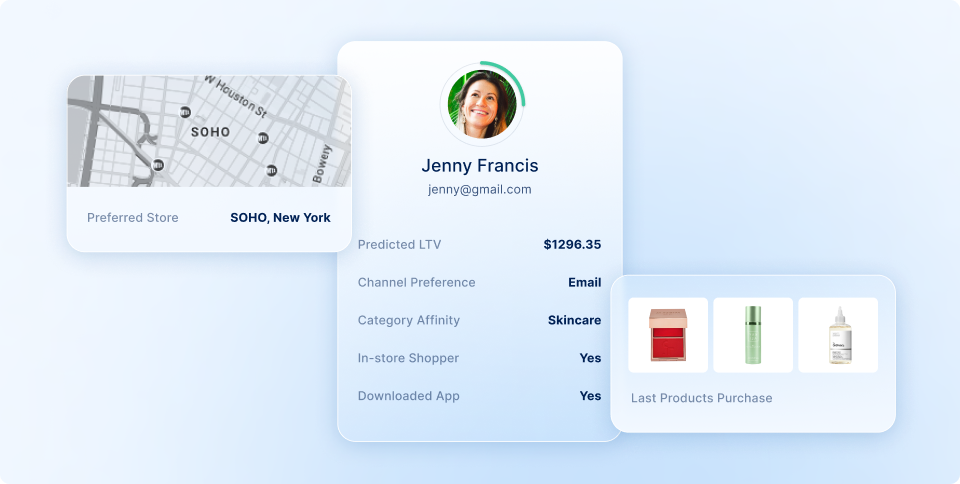
By bringing in-store and digital strategies and tactics together, brands get a dramatic improvement in the quality and quantity of their customer data. And they’re able to build more comprehensive experiences that help create lasting relationships as customers move through the lifecycle from shopper to customer to repeat buyer and brand loyalist. Those same relationships are the foundation of customer loyalty, which in turn drives profitable, sustainable growth.
Getting stores and digital humming along — together
As easy as it is to purchase online, it can still be frustrating to browse online. If your site has an AI-driven shopping assistant, it can help fine-tune your customer’s search, and lead them to the right product. But if a shopper truly has no idea what they’re looking for, it’s the rare brand that can use online channels to bring them the delight of finding something perfect and unexpected. For some people, it’s just more fun to shop in person.
Many retailers are able to create a quality of engagement in-store that is far above that of most online experiences. A visit to a physical store is all about experiencing the brand and the product. It can also increase a shopper’s confidence in their purchase: Fit, quality, and color are difficult to assess online, and returns are not always easy. Research suggests that more than half of shoppers do their research online before heading to a store to make the purchase.
Part of a well-developed digital strategy should be to get shoppers into stores, and to help create a compelling experience while they’re there. That store engagement can be used to strengthen customer profiles, create a better and more personalized experience for your known customers, and increase your ability to identify those who are unknown. Stores can expand your customers’ spending potential and their possibilities online.

Identification is the engine that powers a better integrated customer experience between your stores and your digital presence. It’s also what enables you to build on that experience to move shoppers through the customer lifecycle, from browsers to buyers to repeat loyalists. It’s fine to identify shoppers once they buy, but it’s even better to begin to build a profile while they are still anonymous, adding more personal detail and contact information when the customer is ready to share it.
The most powerful framework for encouraging this progression is customer movement. Customer movement is laser-focused on the customer file, looking at both quantity (the number of customers who are acquired, activated, and retained) and quality (average order value, frequency, and tenure with the brand) as indicators of the evolving health of a brand.
Identification makes customer movement possible. At the highest level, it allows you to recognize your customers and know, for starters, if they’re among your top performers, if they purchase rarely, or if they’re in the middle. By using identification to continue to build profiles that contain information about customer behaviors and preferences, brands can personalize their communications for maximum relevance.
As an example, consider the passenger who always flies first class and has just returned from an overseas trip. On that trip, that passenger boarded separately from others. Flight attendants were ready with their favorite drink. They ate a gourmet meal and slept for a solid seven hours. So in your next email to them, do you want to promote your new $10 snack boxes? Of course not. These customers don’t even know snack boxes exist. But they might want to hear about the new brand of champagne that will be available for their next flight.
While this example is extreme, personalization matters. But an inability to personalize shouldn’t cause you to give up any of your reach. Personalize as much as you can, at every touchpoint where you have the opportunity. Then make sure you have default messaging ready for everyone else. The first-class travelers might get their email about champagne, and the economy-class fliers might be encouraged to splurge on economy plus. If you don’t have much information about someone, you might send a note about new routes from their home airport. Invite everyone into the conversation.
Critical factors in integrating store and digital communications
Brands and retailers face a number of challenges that make it difficult to integrate their in-store and their digital strategies. Among the most common are databases that weren’t built to talk to each other, and, relatedly, overlapping customer profiles. In addition, associates and customers don’t always input data correctly. And the multiple systems used by retailers, from point-of-sale to loyalty and clienteling, don’t always work and play well together.
Some brands, especially global luxury brands, may have equipped each store with its own database, and each store may run that database slightly differently. They also may not be getting the best email for each customer – some customers use fake emails or even pseudonyms. Others may have an assistant who shops for them.
Combined, this makes it very difficult to manage customer profiles. Some customers may have multiple profiles with different email addresses, while others may have separate profiles with each store that they visit. A CDP or data warehouse can be useful in syncing data and sharing it with other systems.
While data cleansing is a long-term project, there are a few things brands can do to help identify their customers and prevent overlap. One of the most effective is simply to have store associates welcome customers with the opportunity to sign in or sign up – for a loyalty program, drawing, or to be informed of an upcoming event. This immediately gives associates the ability to recognize high spenders, loyalty members, and net new customers.
Customers can also be encouraged to use QR codes to check inventory or other styles and colors, and be greeted with a site acquisition modal on the landing page. If their preferred item isn’t available at their favorite store, an associate can order it from another location. Another option is to make it easy for customers to add an item to their wishlist while at a physical store.
These functions help align the customer and their profile with in-store systems. If an item was considered by a customer but was not purchased, scan it so that you’re better able to track the customer’s preferred color, fit, and size.
Best practices in integrating digital and in-store strategies
The best practices that have supported your digital efforts should be put to work in-store. The goal is always to get a complete view of the customer so that you can communicate with relevance and move them efficiently through the customer lifecycle. To do that, it’s important to focus on data capture, identification, and the ability to consolidate the customer profile across channels while still tracking behavior in each channel separately.
Prioritize and maximize data capture
One of the most important elements of integrating your digital and in-store strategies is a consistent and persistent effort in data capture and data cleansing. For each customer, you’ll want to be able to calculate an online average order value (AOV) and an in-store AOV. You’ll want a customer lifetime value number that accounts for activity across every channel. It may be a bit of an effort to implement this, and you may have to work with your vendor to set it up. Knowing your customer at this level is well worth the effort: it does wonders for the relevance of your messaging.
When collecting data in stores, make sure to always present a clear value to the customer. Without this, the store associate who asks for an email at checkout is probably bringing in a high proportion of fake or outdated emails. But there are many reasons for customers to share high-quality contact information: to allow an associate to reach out with information about size, fit, and inventory availability; to receive future event invites; or to get early access to in-store promotions or to shop during extended hours.
In addition to enhancing existing profiles, in-store data capture can also be used to grow your customer file. Take the opportunity to create new shopper profiles with incentives to learn more or possibly earn a discount. By noting that this particular customer was added to your file at an in-store visit, you can better understand characteristics such as location and interest.
Start with service
The pathways between in-store and digital channels may not always be smooth. That’s why it helps to frame the introduction of digital channels as part of an enhanced service experience. Focusing on service, rather than visibly trying to nudge customers towards conversion, helps build trust.
That has several benefits. Starting with service yields cleaner data – customers are generally not going to give you a fake email address if you’re using it to send them a receipt or information about how to manage a return. And that trust will eventually let you present a sales opportunity when the opportunity arises.
Build brand and community
It’s easy to think of digital channels as primarily transactional. Don’t fall into this trap. By combining in-store efforts with digital communications, you can greatly increase your brand affinity and your community. This can come in the form of content-heavy messages that highlight your history and craftsmanship, invitations to store events, and access to extended hours or personal shopping assistance.
This is increasingly important as it becomes more difficult to differentiate based on product. What are the differences between the hundreds of styles of black leggings sold by any athleisure brand? More to the point, what is the difference between a $90 pair of leggings sold by a well-known brand and the thousands of clones available on Amazon? We all gravitate toward brands we feel closest and most connected to.
The best tactics for integrating in-store and digital strategies
How do you use the best of your digital strategies to create success across all channels – including your stores? Start experimenting with some of our favorite tactics, below.
Tactics to take service up a notch
- Dress up your email receipts
Many retailers treat email receipts as an opt-in, but not all customers see it that way. Whether you choose to treat this as an opt-in or not, the email receipt is a powerful tool. It provides great data about your customers and their buying behavior.There’s so much you can do with an email receipt – well beyond what a print version would provide. By listing nearby store locations (in addition to the one where the purchase was made) an email receipt can be one of many avenues leading people into your stores.Like other communications, your email receipts should be personalized when possible. The email receipt for someone who bought an expensive piece of jewelry can tell the customer how to insure or care for it, while the receipt for a less-expensive bracelet might recommend a complementary higher-end piece.
- Make your app an extension of your store
Don’t isolate your app out in the digital world. Allow shoppers to search for items based on what’s available at their favorite store or another store that’s close by. Show the shopper exactly where they can find their desired item with a store map, again customized to each location.
- Make returns easier – and get more from them
A shockingly high percentage of online sales – about 30% – are eventually returned. If a customer is going to return an item, that action should at least contribute to your store’s foot traffic. No brand or retailer gets an incremental purchase when a customer goes to the post office. But if they’re already in your store, they could very well make a purchase.So use your transactional emails to encourage in-store returns, and consider a perk for those who show up. Some retailers give customers who make in-person returns a coupon for a new purchase, but the coupon has to be used that day.
- Win their attention with compelling content
A customer who just made a big purchase might not immediately be ready for another one, but they might like to know more about the item they now own. If a customer recently bought an expensive tennis racquet, send them information about its high-tech features and what they should consider when it’s time for new strings.
- Offer personal assistance
Your digital channels can help connect customers with the sales associates who can help them find the perfect item they didn’t know they needed. An AI shopping assistant can do wonders to help shoppers and browsers zero in on the perfect item.But digital channels can also be used to share contact information for an associate, send reminders for a styling appointment, or invite customers to get a tour of a new collection that’s only available in-store. Personal shoppers at more upscale brands routinely email their best customers, but brands with more mass appeal can mimic this approach with digital avatars that invite shoppers to stores.
Build community with compelling events
Stores have a unique ability to help foster emotional connections with your brand. This gets an extra boost when brands find ways to broaden the in-store experience beyond sales. Just as bookstores have long hosted author readings, almost any retailer can use events to bring in new customers, get them excited, build community, and showcase themselves as a hub for discovery.
There are lots of flavors to choose from:
- Pop-ups: Invite small businesses to hold pop-ups in your store. A clothing retailer might invite local jewelry artisans. A seller of cookware might invite the local bakery. Both brands get to broaden their demographic and show themselves off to new shoppers, and you can invite shoppers to sign up to be notified of the next event.
- Classes: A gourmet food store can offer a class on wine pairings; a running store can host a weekly fun run. These attract people who might be interested in your merchandise, but just haven’t made it into your store.
- Partnerships with charities: A good cause can also help people get excited about your brand. Offer to be a drop-off point for the local food pantry, or partner with a local or national charity to donate a percentage of each purchase.
For any event, data collection should begin with the RSVP. That means identifying and building profiles of people who visit the events pages on your web sites, and adding events information to their profiles. Most identification engines are configured to identify people who visit product pages, so you’ll want to work with your vendor to make sure you are capturing info from events pages as well.
You may even want to kick off a stream of content for shoppers who show interest in your in-store events. If someone looked up the dates for your charcuterie board-making classes, you could send them emails with tips to make a great-looking board, even if they weren’t able to attend in person.
Supercharge your clienteling
- Amplify your direct mail campaigns
Every customer interaction, whether in-store, online or via other channels, is a signal that gives you the opportunity to meet that customer where they are most likely to engage. If you’ve just sent a direct-mail piece, use your own or paid channels to continue to build on that excitement. QR codes specific to a particular channel or tied to specific offers will tell you how your customer prefers to interact and to purchase.
- Bridge the (inventory) gap
If a customer can’t find their size in a physical store, most associates will offer to order it online and have it shipped to their house. If the customer agrees, you get the sale and an opportunity for data capture. But what if the customer declines?In that case, it’s time for a follow-up email. Say that you noticed the customer was interested in an item, and reiterate the offer to send it to them or help them find another suitable item.
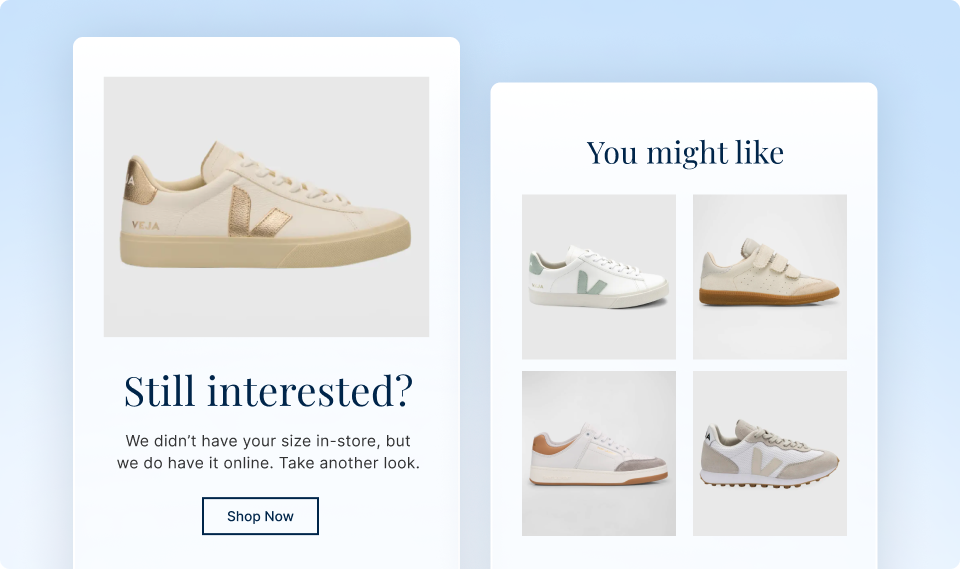
- Even if the customer doesn’t buy the item, their interest should still be part of their profile. Make sure the item gets scanned, and then categorize the item either as one that was browsed or one that ended up in an abandoned cart.
- Go in-depth in email
Your in-store shoppers may not be ready to welcome your full email flow. Consider sending them more substantive emails less frequently. These emails can look almost like a quarterly email newsletter, highlighting showy items, bringing in relevant content, and promoting upcoming events.For your best customers, these emails can be accompanied by other communications – maybe it’s a beautiful package or a lovely invitation that comes in the mail. Whether the follow-up is carried out by a store associate or the direct mail team, make sure the outreach is mapped to the customer’s profile.
Nudge customers to buy direct
From discount stores to big-box retailers to Amazon, customers have many ways to purchase and experience your brand that are outside your guidelines, tone and pricing. When customers purchase through third parties, you lose visibility into their purchase history, behavior, and preferences. That makes it difficult to identify your top customers and be aware of their preferences. It also makes it harder to personalize and create repeat customers by moving them efficiently through the lifecycle.
To encourage customers to shop with you directly:
- Offer exclusives
Not all of your merchandise has to be available through third parties. Offer your customers exclusives and capsule collections that can only be purchased in your branded stores.
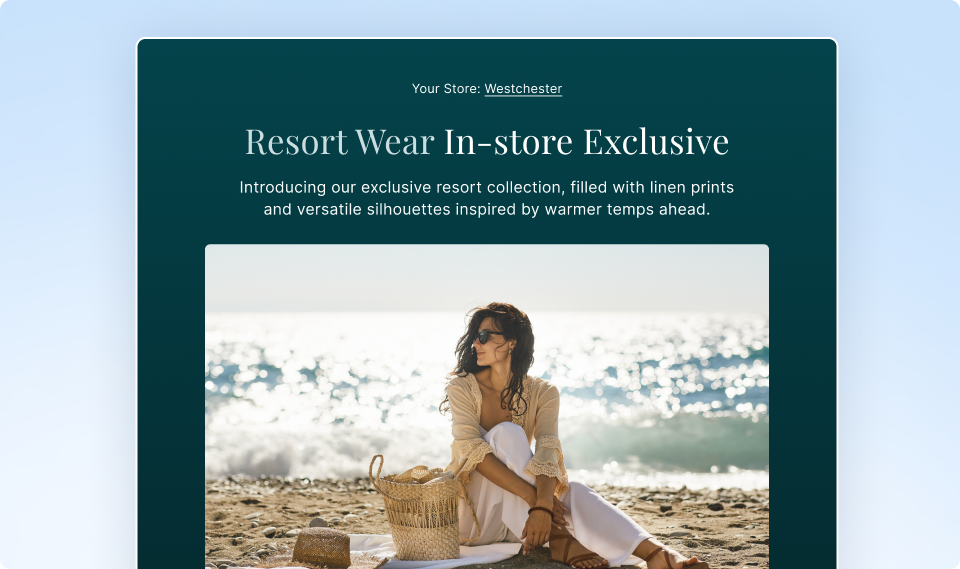
- Expand subscription offerings
Use your loyalty program to set up perks for products that lend themselves to subscriptions or regular replenishment.
- Make registration more appealing
Offer warranties for those who register their purchase with you, thereby giving your customer a compelling reason to identify themselves. While this was once used mostly for high-end products, we’ve even seen frisbees with registration codes!
- Find power in packaging
Even if your customer buys from a wholesaler, you still own the tags and often other packaging as well. So include a QR code that offers information about how to style and care for the product. When the customer scans it, you’ll be able to map that product to their profile. If you’re selling through Duty Free, you can put a QR code on your display, offering the customer new uses for the product or the ability to shop the full line. That code gives you a point of data capture and prevents you from losing visibility into that customer.
- Make the most of your loyalty program
Consider awarding a small number of loyalty points even for purchases made through third parties. You don’t want to incentivize your customers to buy through wholesalers, but you do want to know what and when they’re buying and, most important, that they’re actually a customer of your brand.
Bringing customers through the lifecycle – from unidentified shopper to identified buyer, repeat buyer and brand loyalist – is too important for any channel to attempt alone. By unifying in-store and digital marketing strategies, brands can gain the in-depth knowledge of their customers that allows them to efficiently move them through the customer lifecycle, yielding immediate benefits while paving the way for long-term, healthy growth.
Ready to learn more about how your in-store and digital strategies can be stronger together?
Talk to a retail strategist

